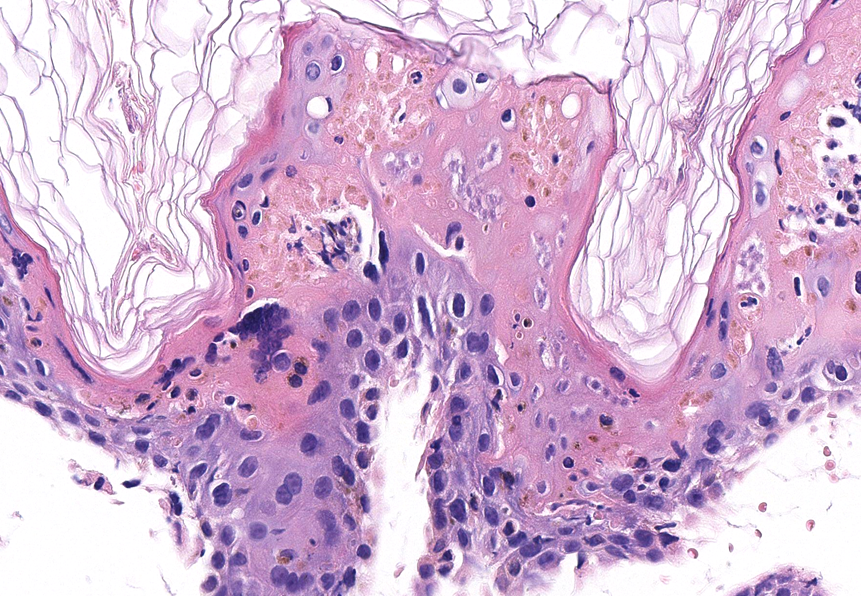Edematous skin means. Edema: Types, Symptoms, Causes, and Treatment Options
What is edema and how does it affect the body. What are the different types of edema and their symptoms. How can edema be treated and prevented. What are the potential complications of edema.
Understanding Edema: Swelling Caused by Fluid Retention
Edema is a medical condition characterized by swelling due to fluid buildup in bodily tissues. While it commonly affects the skin, particularly in the extremities, edema can also impact internal organs such as the brain, lungs, and eyes. This condition can develop gradually or have a sudden onset, and while it’s often benign, it may sometimes indicate a more serious underlying health issue.
What causes edema? The primary cause is fluid retention in the body’s tissues. This can occur due to various factors, including:
- Poor circulation
- Heart or kidney problems
- Pregnancy
- Certain medications
- Prolonged sitting or standing
- High salt intake
- Hormonal changes
Recognizing the Signs and Symptoms of Edema
How can you identify edema? The most common symptoms include:

- Swelling in affected areas, especially the hands, arms, ankles, legs, and feet
- Stretched, shiny skin over the swollen area
- Skin that retains a dimple after being pressed for a few seconds (pitting edema)
- Aching body parts and stiff joints
- Unexplained weight gain or loss
- Decreased urine production
- Puffiness in the face or around the eyes
- Visual changes (in cases of macular edema)
It’s important to note that symptoms can vary depending on the type and location of edema. If you experience persistent or severe swelling, it’s crucial to consult a healthcare professional for proper diagnosis and treatment.
Types of Edema: From Peripheral to Cerebral
Edema can manifest in various forms, each affecting different parts of the body. Understanding these types can help in identifying and addressing the condition more effectively. Let’s explore the main types of edema:
Peripheral Edema
What is peripheral edema? This is the most common type of edema, affecting the extremities such as feet, ankles, legs, hands, and arms. Symptoms include:

- Noticeable swelling in the affected areas
- Puffiness
- Difficulty moving the swollen body parts
- Skin that feels tight or stretched
Peripheral edema can be caused by various factors, including prolonged standing or sitting, pregnancy, and certain medical conditions like heart or kidney disease.
Pulmonary Edema
Pulmonary edema is a serious condition where excess fluid collects in the lungs. This type of edema can be life-threatening and requires immediate medical attention. What are the symptoms of pulmonary edema?
- Difficulty breathing, especially when lying down
- Wheezing or gasping for air
- Coughing up pink, frothy sputum
- Chest pain or pressure
- Rapid, irregular heartbeat
Pulmonary edema is often a result of congestive heart failure or acute lung injury. In some cases, it can develop rapidly, leading to respiratory failure if not treated promptly.
Cerebral Edema
Cerebral edema refers to swelling in the brain, which can occur due to various reasons, many of which are potentially life-threatening. What should you look out for in cases of cerebral edema?
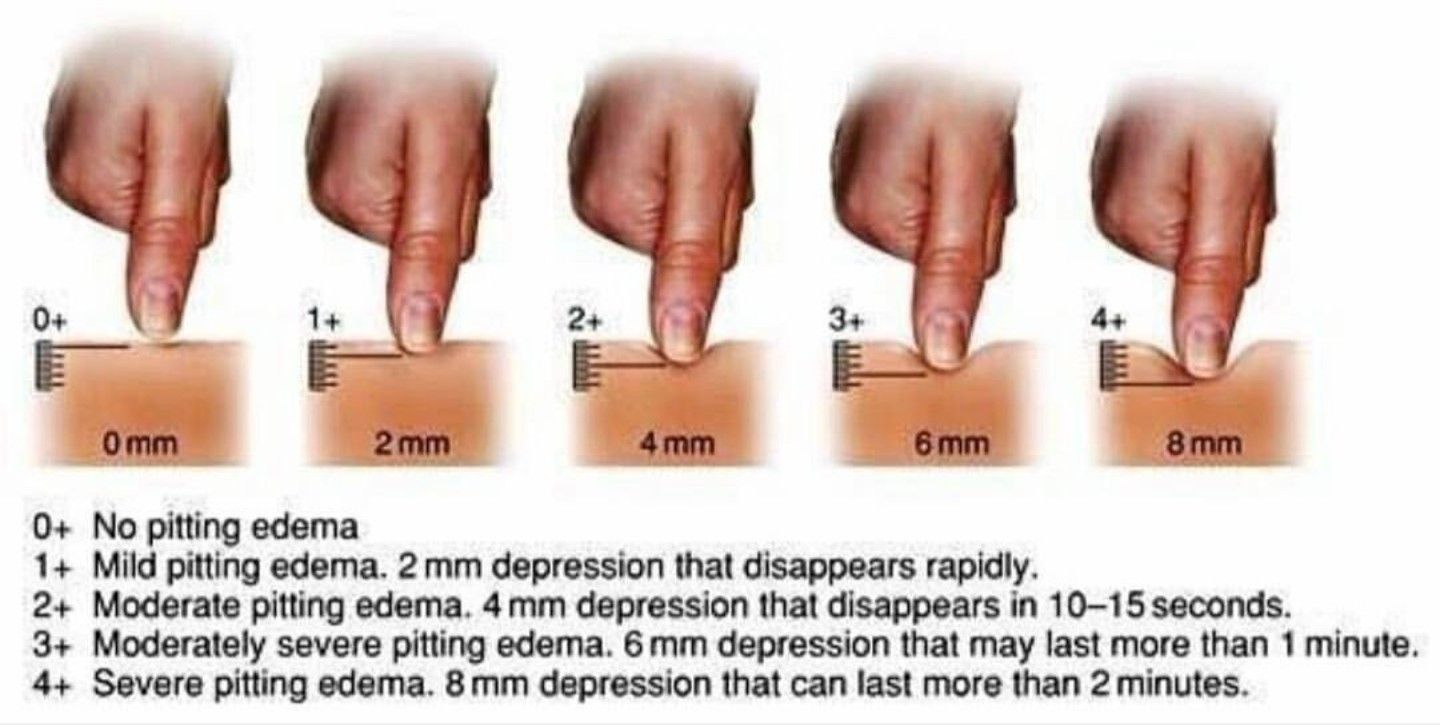
- Severe headache
- Neck pain or stiffness
- Changes in vision, including partial or complete vision loss
- Altered consciousness or mental state
- Nausea and vomiting
- Dizziness or loss of balance
Given the serious nature of cerebral edema, any suspected cases should be treated as a medical emergency.
Macular Edema
Macular edema is a complication often associated with diabetic retinopathy. It involves swelling in the macula, the part of the eye responsible for detailed, central vision. What are the signs of macular edema?
- Blurred or wavy central vision
- Colors appearing washed out or faded
- Difficulty reading or recognizing faces
Early detection and treatment of macular edema are crucial to prevent permanent vision loss.
Diagnosing Edema: Medical Approaches and Tests
How do healthcare professionals diagnose edema? The diagnostic process typically involves:
- Physical examination: The doctor will check for swelling and may press on the affected area to check for pitting.
- Medical history review: This helps identify potential causes or risk factors.
- Blood tests: These can check for underlying conditions like kidney or liver problems.
- Urine tests: To assess kidney function and protein levels.
- Imaging tests: X-rays, ultrasounds, or CT scans may be used to visualize affected areas.
- Echocardiogram: This heart ultrasound can detect heart problems that might cause edema.
In some cases, more specialized tests may be required depending on the suspected type and cause of edema.

Treatment Options for Edema: From Medications to Lifestyle Changes
What are the available treatments for edema? The treatment approach depends on the underlying cause and severity of the condition. Here are some common strategies:
Medications
Diuretics, also known as “water pills,” are often prescribed to treat edema. How do diuretics work? They increase urine production, helping the body eliminate excess fluid. Different types of diuretics work in various ways, and a healthcare provider will recommend the most appropriate one based on the individual case.
Compression Therapy
Wearing compression garments can help reduce swelling and discomfort associated with edema, especially in the extremities. These garments work by applying pressure to the affected area, promoting better circulation and fluid drainage.
Lifestyle Modifications
Several self-care techniques can help manage and prevent edema:
- Reducing salt intake
- Maintaining a healthy weight
- Regular exercise to improve circulation
- Elevating affected limbs when possible
- Avoiding prolonged periods of sitting or standing
- Staying hydrated
- Wearing loose, comfortable clothing
Specialized Treatments
For specific types of edema, targeted treatments may be necessary:

- Pulmonary edema may require oxygen therapy and medications to improve heart function.
- Macular edema might be treated with laser therapy or anti-VEGF injections.
- Cerebral edema often requires immediate medical intervention, including medications to reduce brain swelling and, in severe cases, surgery.
Preventing Edema: Proactive Measures for Better Health
Can edema be prevented? While not all cases of edema can be avoided, several strategies can help reduce the risk:
- Maintain a balanced diet low in salt and rich in potassium
- Stay physically active to promote good circulation
- Manage underlying health conditions, such as diabetes or heart disease
- Avoid smoking and limit alcohol consumption
- Take regular breaks to move around if you sit or stand for long periods
- Wear loose-fitting clothes and avoid tight elastic bands on socks or stockings
- Consider wearing support stockings, especially during travel or prolonged periods of inactivity
By incorporating these habits into daily life, individuals can significantly reduce their risk of developing edema and its associated complications.

Potential Complications of Untreated Edema
What are the risks of leaving edema untreated? While mild cases of edema may resolve on their own, persistent or severe edema can lead to various complications:
- Skin ulcers and infections
- Decreased blood circulation
- Increased risk of skin breakdown and cellulitis
- Scarring between layers of tissue
- Decreased mobility and flexibility in affected limbs
- Increased risk of deep vein thrombosis (DVT)
In cases of internal organ edema, complications can be more severe:
- Pulmonary edema can lead to respiratory failure if left untreated
- Cerebral edema may cause brain damage or even death if not addressed promptly
- Macular edema can result in permanent vision loss without proper management
Given these potential risks, it’s crucial to seek medical attention if you suspect you have edema, especially if it’s persistent or accompanied by other concerning symptoms.
Living with Edema: Coping Strategies and Support
How can individuals manage daily life with edema? Living with edema can be challenging, but several strategies can help improve quality of life:

- Follow your treatment plan diligently
- Maintain open communication with your healthcare provider
- Join support groups to connect with others experiencing similar challenges
- Practice stress-reduction techniques, as stress can exacerbate edema in some cases
- Adapt your living space to accommodate mobility issues if necessary
- Explore assistive devices that can help with daily tasks
- Educate family and friends about your condition to build a strong support network
Remember, while edema can be a chronic condition, many people successfully manage it and lead fulfilling lives with proper care and support.
Types, causes, symptoms, and treatment
We include products we think are useful for our readers. If you buy through links on this page, we may earn a small commission Here’s our process.
Medical News Today only shows you brands and products that we stand behind.
Our team thoroughly researches and evaluates the recommendations we make on our site. To establish that the product manufacturers addressed safety and efficacy standards, we:
- Evaluate ingredients and composition: Do they have the potential to cause harm?
- Fact-check all health claims: Do they align with the current body of scientific evidence?
- Assess the brand: Does it operate with integrity and adhere to industry best practices?
We do the research so you can find trusted products for your health and wellness.
Read more about our vetting process.
Was this helpful?
Edema refers to swelling due to fluid buildup in bodily tissues. It is common in the skin but can affect the brain, lungs, and other organs.
It is common in the skin but can affect the brain, lungs, and other organs.
There are different causes and types of edema. For example, pulmonary edema affects the lungs, while pedal edema causes swelling in the feet.
Edema usually starts slowly, but the onset can be sudden. It is a common condition, but it can also be a sign of a serious condition.
This article will explain what edema is and how to recognize it, as well as the different types of and treatments for edema. It will also look at possible complications of the condition.
Share on PinterestEdema, or water retention, causes swelling in the affected part of the body.
Edema refers to swelling and puffiness in different areas of the body.
It most often occurs in the skin, especially in the hands, arms, ankles, legs, and feet. However, it can also affect the muscles, bowel, lungs, eyes, and brain.
Edema mainly occurs in older adults and pregnant people, but anyone can experience it.
Symptoms depend on the underlying cause, but swelling, tightness, and pain are common.
A person with edema may also notice:
- swollen, stretched, and shiny skin
- skin that retains a dimple after a few seconds of pressure
- puffiness of the ankles, face, or eyes
- aching body parts and stiff joints
- weight gain or weight loss
- decreased urine production
- fuller hand and neck veins
- visual anomalies
Symptoms can also depend on the type of edema a person has and which part of the body it affects.
Treatment will also depend on the cause of edema.
Diuretics are a type of medication. They help get rid of excess fluid by increasing the rate of urine production by the kidneys. Different types work in different ways.
A doctor will recommend a specific treatment plan for macular edema, pulmonary edema, and other types of edema.
A person with edema could also try wearing compression garments and doing specific exercises to help.
Share on PinterestWearing compression stockings can help reduce the swelling and discomfort associated with edema.
Some self-care techniques can help reduce or prevent edema.
These include:
- reducing salt intake
- losing weight, if appropriate
- getting regular exercise
- raising the legs when possible to improve circulation
- wearing supporting stockings, which are available to purchase online
- not sitting or standing still for too long
- getting up and walking about regularly when traveling
- avoiding extremes of temperature, such as hot baths, showers, and saunas
- dressing warmly in cold weather
A masseuse or physical therapist may help remove the fluid by stroking firmly in the direction of the heart.
Oxygen may be useful for treating some types of edema. For example, an individual with cardiogenic pulmonary edema may need additional oxygen if they have difficulty taking in enough.
Oxygen delivered through the nose may improve poor vision associated with diabetic macular edema, according to older research from 2004.
However, some research suggests that hyperbaric oxygen therapy can increase the risk of pulmonary edema.
There are many types of edema. Each one can indicate a range of further health conditions.
Types include:
- Peripheral edema: This affects the feet, ankles, legs, hands, and arms. Symptoms include swelling, puffiness, and difficulty moving certain parts of the body.
- Pulmonary edema: This occurs when excess fluid collects in the lungs, making breathing difficult. This can result from congestive heart failure or acute lung injury. It is a serious condition, it can be a medical emergency, and it can lead to respiratory failure and death.
- Cerebral edema: This occurs in the brain. It can happen for a range of reasons, many of which are potentially life threatening. Symptoms include:
- headache
- neck pain or stiffness
- whole or partial vision loss
- changes in consciousness or mental state
- nausea
- vomiting
- dizziness
- Macular edema: This is a serious complication of diabetic retinopathy.
 Swelling occurs in the macula, which is the part of the eye that enables detailed, central vision. The person may notice changes to their central vision and how they see colors.
Swelling occurs in the macula, which is the part of the eye that enables detailed, central vision. The person may notice changes to their central vision and how they see colors. - Pitting edema: With this type, which can occur in peripheral edema, pressure applied to the skin leaves an indent or pit in the skin.
- Periorbital edema: This refers to inflammation and puffiness around the eye or eyes. The puffiness is due to fluid buildup and is usually temporary.
Edema can occur in other locations as well, but those mentioned above are the most common.
Edema can indicate one of many serious health conditions. It is important for a person to check with a doctor if they are concerned about any kind of swelling.
Edema can result from circulatory problems, infection, tissue death, malnutrition, total body fluid overload, and electrolyte problems.
There are many other possible causes of edema, including the following.
Heart failure
If one or both of the lower chambers of the heart cannot pump blood properly, blood can accumulate in the limbs, causing edema.
Kidney disease or kidney damage
The body of a person with a kidney disorder may not be able to eliminate enough fluid and sodium from the blood. This puts pressure on the blood vessels, which causes some of the liquid to leak out. Swelling can occur around the legs and eyes.
Damage to the glomeruli, which are the capillaries in the kidneys that filter waste and excess fluids from the blood, can result in nephrotic syndrome. One symptom of this is a low level of the protein albumin in the blood. This can lead to edema.
Liver disease
Cirrhosis affects liver function. It can lead to changes in the secretion of hormones and fluid-regulating chemicals and reduced protein production. This causes fluid to leak out of the blood vessels into surrounding tissue.
Cirrhosis also increases pressure within the portal vein, which is the large vein that carries blood from the intestines, spleen, and pancreas to the liver. Edema can occur in the legs and abdominal cavity.
Edema can occur in the legs and abdominal cavity.
Certain medications
Certain medications can also increase the risk of edema.
These include:
- vasodilators, which are drugs that open blood vessels
- calcium channel blockers
- nonsteroidal anti-inflammatory drugs
- estrogens
- some chemotherapy drugs
- some diabetes drugs, such as thiazolidinediones
Pregnancy
During pregnancy, the body releases hormones that encourage fluid retention and the body to retain more sodium and water than usual. The face, hands, lower limbs, and feet may swell.
When a person is resting in a reclined position during pregnancy, the enlarged uterus can press on a vein known as the inferior vena cava. This can obstruct the femoral veins, leading to edema.
During pregnancy, the blood clots more easily. This can increase the risk of deep vein thrombosis (DVT), which is another potential cause of edema.
Eclampsia, which results from pregnancy-induced hypertension, or high blood pressure, can also cause edema.
Dietary factors
A number of dietary factors can also affect the risk of edema, such as:
- consuming too much salt (in people who are susceptible to developing edema)
- malnutrition, wherein edema can result from low protein levels in the blood
- a low intake of vitamin B 1, B 6, and B5
Diabetes
Some complications of diabetes include:
- cardiovascular disease
- acute renal failure
- acute liver failure
- protein-losing enteropathy, which is an intestinal condition that causes protein loss
These complications, and certain medications for diabetes, can result in edema.
Diabetic macular edema is the swelling of the retina in diabetes.
Conditions affecting the brain
Some causes of swelling in the brain include:
- Head injuries: A blow to the head may result in an accumulation of fluids in the brain.
- Stroke: A major stroke can result in brain swelling.

- Brain tumors: A brain tumor will accumulate water around itself, especially as it builds new blood vessels.
Allergies
Some foods and insect bites may cause edema of the face or skin in people who have allergies or sensitivities to them. Severe swelling can be a symptom of anaphylaxis.
Swelling in the throat can close a person’s airway, so they cannot breathe. This is a medical emergency.
Problems with the extremities
Some extremity-related causes of edema include:
- A blood clot: Any blockage, such as a clot in a vein, can prevent the blood from flowing. As pressure increases in the vein, fluids start to leak into the surrounding tissue, causing edema.
- Varicose veins: These usually occur because valves become damaged. Pressure increases in the veins, and they start to bulge. The pressure also increases the risk of fluids leaking into the surrounding tissue.
- A cyst, growth, or tumor: Any lump can cause edema if it presses against a lymph duct or vein.
 As pressure builds up, fluids can leak into surrounding tissue.
As pressure builds up, fluids can leak into surrounding tissue. - Lymphedema: The lymphatic system helps remove excess fluid from tissues. Any damage to this system — from a surgical procedure, an infection, or a tumor, for example — can result in edema.
Miscellaneous conditions
Some other possible causes of edema include:
- Prolonged immobility: People who are immobile for a long time can develop edema in their skin. This can be due both to fluid pooling in gravity dependent areas and the release of antidiuretic hormone from the pituitary.
- High altitude: This, combined with physical exertion, can increase the risk of edema. Acute mountain sickness can lead to high-altitude pulmonary edema or high-altitude cerebral edema.
- Burns and sunburn: The skin reacts to burns by retaining fluid. This causes localized swelling.
- Infection or inflammation: Any tissue that is infected or inflamed can become swollen.
 This is usually most noticeable in the skin.
This is usually most noticeable in the skin. - Menstruation and premenstruation: Hormone levels fluctuate during the menstrual cycle. During the days before menstruation, levels of progesterone are lower, and this may cause fluid retention.
- Birth control pills: Any medication that contains estrogen can cause fluid retention. It is not uncommon for people to gain weight when they first start using birth control pills.
- Menopause: Around menopause, hormone fluctuations can cause fluid retention. Hormone replacement therapy can also trigger edema.
- Thyroid disease: Hormonal imbalances associated with thyroid problems can lead to edema.
Untreated edema can lead to:
- painful swelling, with pain that gets worse
- stiffness and difficulty walking
- stretched, itchy skin
- infection in the area of swelling
- scarring between the layers of tissue
- poor blood circulation
- loss of elasticity in the arteries, veins, and joints
- ulcerations on the skin
Any underlying condition needs medical treatment to prevent it from becoming more serious.
Edema occurs when fluid builds up in the body. This causes swelling, which can sometimes be painful.
There are several potential causes of edema, including pregnancy, heart failure, liver disease, and certain medications. The treatment a person receives will depend on the cause.
Types, causes, symptoms, and treatment
We include products we think are useful for our readers. If you buy through links on this page, we may earn a small commission Here’s our process.
Medical News Today only shows you brands and products that we stand behind.
Our team thoroughly researches and evaluates the recommendations we make on our site. To establish that the product manufacturers addressed safety and efficacy standards, we:
- Evaluate ingredients and composition: Do they have the potential to cause harm?
- Fact-check all health claims: Do they align with the current body of scientific evidence?
- Assess the brand: Does it operate with integrity and adhere to industry best practices?
We do the research so you can find trusted products for your health and wellness.
Read more about our vetting process.
Was this helpful?
Edema refers to swelling due to fluid buildup in bodily tissues. It is common in the skin but can affect the brain, lungs, and other organs.
There are different causes and types of edema. For example, pulmonary edema affects the lungs, while pedal edema causes swelling in the feet.
Edema usually starts slowly, but the onset can be sudden. It is a common condition, but it can also be a sign of a serious condition.
This article will explain what edema is and how to recognize it, as well as the different types of and treatments for edema. It will also look at possible complications of the condition.
Share on PinterestEdema, or water retention, causes swelling in the affected part of the body.
Edema refers to swelling and puffiness in different areas of the body.
It most often occurs in the skin, especially in the hands, arms, ankles, legs, and feet. However, it can also affect the muscles, bowel, lungs, eyes, and brain.
Edema mainly occurs in older adults and pregnant people, but anyone can experience it.
Symptoms depend on the underlying cause, but swelling, tightness, and pain are common.
A person with edema may also notice:
- swollen, stretched, and shiny skin
- skin that retains a dimple after a few seconds of pressure
- puffiness of the ankles, face, or eyes
- aching body parts and stiff joints
- weight gain or weight loss
- decreased urine production
- fuller hand and neck veins
- visual anomalies
Symptoms can also depend on the type of edema a person has and which part of the body it affects.
Treatment will also depend on the cause of edema.
Diuretics are a type of medication. They help get rid of excess fluid by increasing the rate of urine production by the kidneys. Different types work in different ways.
A doctor will recommend a specific treatment plan for macular edema, pulmonary edema, and other types of edema.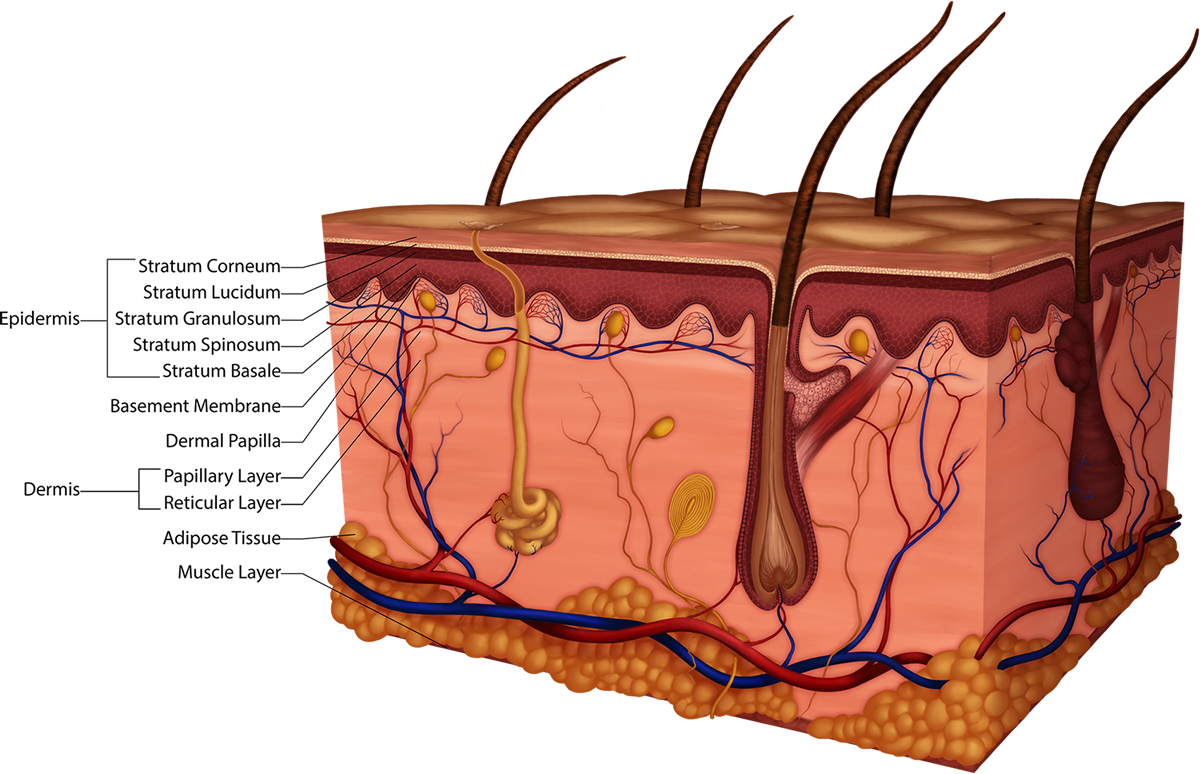
A person with edema could also try wearing compression garments and doing specific exercises to help.
Share on PinterestWearing compression stockings can help reduce the swelling and discomfort associated with edema.
Some self-care techniques can help reduce or prevent edema.
These include:
- reducing salt intake
- losing weight, if appropriate
- getting regular exercise
- raising the legs when possible to improve circulation
- wearing supporting stockings, which are available to purchase online
- not sitting or standing still for too long
- getting up and walking about regularly when traveling
- avoiding extremes of temperature, such as hot baths, showers, and saunas
- dressing warmly in cold weather
A masseuse or physical therapist may help remove the fluid by stroking firmly in the direction of the heart.
Oxygen may be useful for treating some types of edema. For example, an individual with cardiogenic pulmonary edema may need additional oxygen if they have difficulty taking in enough.
Oxygen delivered through the nose may improve poor vision associated with diabetic macular edema, according to older research from 2004.
However, some research suggests that hyperbaric oxygen therapy can increase the risk of pulmonary edema.
There are many types of edema. Each one can indicate a range of further health conditions.
Types include:
- Peripheral edema: This affects the feet, ankles, legs, hands, and arms. Symptoms include swelling, puffiness, and difficulty moving certain parts of the body.
- Pulmonary edema: This occurs when excess fluid collects in the lungs, making breathing difficult. This can result from congestive heart failure or acute lung injury. It is a serious condition, it can be a medical emergency, and it can lead to respiratory failure and death.
- Cerebral edema: This occurs in the brain. It can happen for a range of reasons, many of which are potentially life threatening.
 Symptoms include:
Symptoms include:- headache
- neck pain or stiffness
- whole or partial vision loss
- changes in consciousness or mental state
- nausea
- vomiting
- dizziness
- Macular edema: This is a serious complication of diabetic retinopathy. Swelling occurs in the macula, which is the part of the eye that enables detailed, central vision. The person may notice changes to their central vision and how they see colors.
- Pitting edema: With this type, which can occur in peripheral edema, pressure applied to the skin leaves an indent or pit in the skin.
- Periorbital edema: This refers to inflammation and puffiness around the eye or eyes. The puffiness is due to fluid buildup and is usually temporary.
Edema can occur in other locations as well, but those mentioned above are the most common.
Edema can indicate one of many serious health conditions. It is important for a person to check with a doctor if they are concerned about any kind of swelling.
Edema can result from circulatory problems, infection, tissue death, malnutrition, total body fluid overload, and electrolyte problems.
There are many other possible causes of edema, including the following.
Heart failure
If one or both of the lower chambers of the heart cannot pump blood properly, blood can accumulate in the limbs, causing edema.
Kidney disease or kidney damage
The body of a person with a kidney disorder may not be able to eliminate enough fluid and sodium from the blood. This puts pressure on the blood vessels, which causes some of the liquid to leak out. Swelling can occur around the legs and eyes.
Damage to the glomeruli, which are the capillaries in the kidneys that filter waste and excess fluids from the blood, can result in nephrotic syndrome. One symptom of this is a low level of the protein albumin in the blood. This can lead to edema.
Liver disease
Cirrhosis affects liver function. It can lead to changes in the secretion of hormones and fluid-regulating chemicals and reduced protein production. This causes fluid to leak out of the blood vessels into surrounding tissue.
This causes fluid to leak out of the blood vessels into surrounding tissue.
Cirrhosis also increases pressure within the portal vein, which is the large vein that carries blood from the intestines, spleen, and pancreas to the liver. Edema can occur in the legs and abdominal cavity.
Certain medications
Certain medications can also increase the risk of edema.
These include:
- vasodilators, which are drugs that open blood vessels
- calcium channel blockers
- nonsteroidal anti-inflammatory drugs
- estrogens
- some chemotherapy drugs
- some diabetes drugs, such as thiazolidinediones
Pregnancy
During pregnancy, the body releases hormones that encourage fluid retention and the body to retain more sodium and water than usual. The face, hands, lower limbs, and feet may swell.
When a person is resting in a reclined position during pregnancy, the enlarged uterus can press on a vein known as the inferior vena cava. This can obstruct the femoral veins, leading to edema.
This can obstruct the femoral veins, leading to edema.
During pregnancy, the blood clots more easily. This can increase the risk of deep vein thrombosis (DVT), which is another potential cause of edema.
Eclampsia, which results from pregnancy-induced hypertension, or high blood pressure, can also cause edema.
Dietary factors
A number of dietary factors can also affect the risk of edema, such as:
- consuming too much salt (in people who are susceptible to developing edema)
- malnutrition, wherein edema can result from low protein levels in the blood
- a low intake of vitamin B 1, B 6, and B5
Diabetes
Some complications of diabetes include:
- cardiovascular disease
- acute renal failure
- acute liver failure
- protein-losing enteropathy, which is an intestinal condition that causes protein loss
These complications, and certain medications for diabetes, can result in edema.
Diabetic macular edema is the swelling of the retina in diabetes.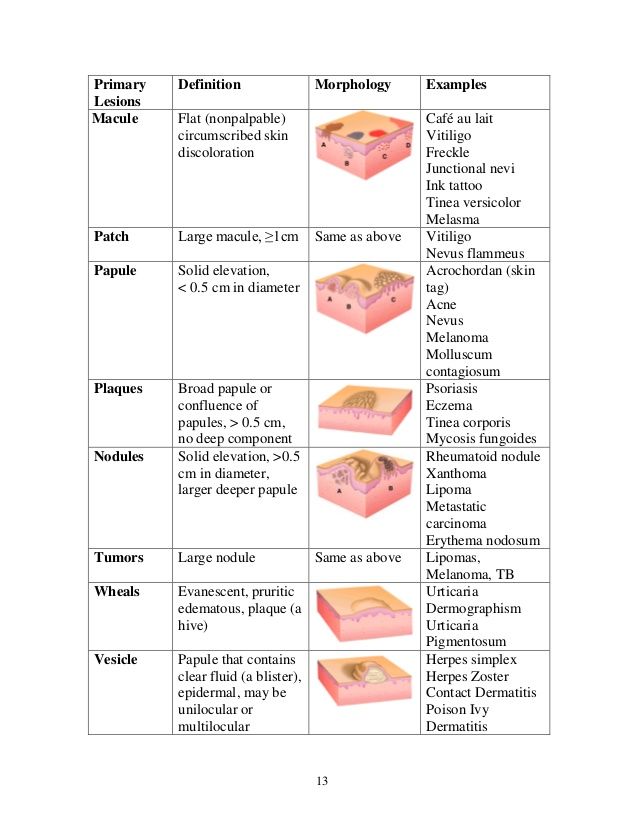
Conditions affecting the brain
Some causes of swelling in the brain include:
- Head injuries: A blow to the head may result in an accumulation of fluids in the brain.
- Stroke: A major stroke can result in brain swelling.
- Brain tumors: A brain tumor will accumulate water around itself, especially as it builds new blood vessels.
Allergies
Some foods and insect bites may cause edema of the face or skin in people who have allergies or sensitivities to them. Severe swelling can be a symptom of anaphylaxis.
Swelling in the throat can close a person’s airway, so they cannot breathe. This is a medical emergency.
Problems with the extremities
Some extremity-related causes of edema include:
- A blood clot: Any blockage, such as a clot in a vein, can prevent the blood from flowing. As pressure increases in the vein, fluids start to leak into the surrounding tissue, causing edema.

- Varicose veins: These usually occur because valves become damaged. Pressure increases in the veins, and they start to bulge. The pressure also increases the risk of fluids leaking into the surrounding tissue.
- A cyst, growth, or tumor: Any lump can cause edema if it presses against a lymph duct or vein. As pressure builds up, fluids can leak into surrounding tissue.
- Lymphedema: The lymphatic system helps remove excess fluid from tissues. Any damage to this system — from a surgical procedure, an infection, or a tumor, for example — can result in edema.
Miscellaneous conditions
Some other possible causes of edema include:
- Prolonged immobility: People who are immobile for a long time can develop edema in their skin. This can be due both to fluid pooling in gravity dependent areas and the release of antidiuretic hormone from the pituitary.
- High altitude: This, combined with physical exertion, can increase the risk of edema.
 Acute mountain sickness can lead to high-altitude pulmonary edema or high-altitude cerebral edema.
Acute mountain sickness can lead to high-altitude pulmonary edema or high-altitude cerebral edema. - Burns and sunburn: The skin reacts to burns by retaining fluid. This causes localized swelling.
- Infection or inflammation: Any tissue that is infected or inflamed can become swollen. This is usually most noticeable in the skin.
- Menstruation and premenstruation: Hormone levels fluctuate during the menstrual cycle. During the days before menstruation, levels of progesterone are lower, and this may cause fluid retention.
- Birth control pills: Any medication that contains estrogen can cause fluid retention. It is not uncommon for people to gain weight when they first start using birth control pills.
- Menopause: Around menopause, hormone fluctuations can cause fluid retention. Hormone replacement therapy can also trigger edema.
- Thyroid disease: Hormonal imbalances associated with thyroid problems can lead to edema.

Untreated edema can lead to:
- painful swelling, with pain that gets worse
- stiffness and difficulty walking
- stretched, itchy skin
- infection in the area of swelling
- scarring between the layers of tissue
- poor blood circulation
- loss of elasticity in the arteries, veins, and joints
- ulcerations on the skin
Any underlying condition needs medical treatment to prevent it from becoming more serious.
Edema occurs when fluid builds up in the body. This causes swelling, which can sometimes be painful.
There are several potential causes of edema, including pregnancy, heart failure, liver disease, and certain medications. The treatment a person receives will depend on the cause.
Excess fluid, swelling – symptoms, diagnosis, treatment methods.
Description
Diagnostics
Treatment Methods
Make an appointment
Edema is a pathological condition in which fluid accumulates outside the vascular bed, filling body cavities and / or intercellular space. It can be inflammatory or non-inflammatory in nature, differs in the rate of occurrence and pathogenesis. Puffiness of different anatomical areas can signal serious diseases of the internal organs and body systems.
It can be inflammatory or non-inflammatory in nature, differs in the rate of occurrence and pathogenesis. Puffiness of different anatomical areas can signal serious diseases of the internal organs and body systems.
A slight pastosity of the face in the morning is equal to the norm. If the edema does not disappear after some time after waking up and / or is characterized by severe manifestations, you should consult a doctor. In addition to diseases, puffiness of the face can be the result of an unhealthy lifestyle, bad habits, inappropriate use of diuretics and other factors.
Symptoms
If the edema is associated with an internal pathology, it, having characteristic features, will be accompanied by symptoms of the underlying disease. Kidney diseases are characterized by “morning bags” under the eyes. Cardiac edema spreads to the entire face and becomes more noticeable towards evening.
Puffiness of the eyelids and cheeks, which appears after a long sleep, is characteristic of osteochondrosis of the cervical spine.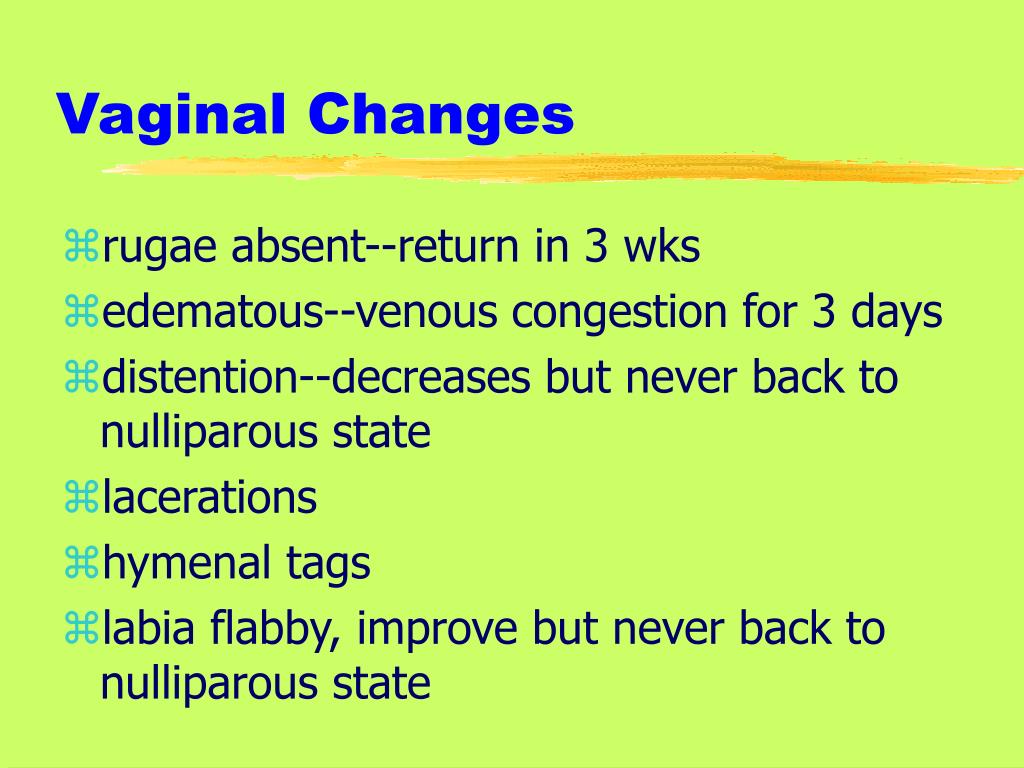 Allergic edema is usually observed not only on the skin, but also on the mucous membranes. It is almost always accompanied by runny nose, watery eyes and sneezing.
Allergic edema is usually observed not only on the skin, but also on the mucous membranes. It is almost always accompanied by runny nose, watery eyes and sneezing.
Swelling after trauma or surgery is localized and disappears with time. Edema, which is a symptom of the inflammatory process on the face, is also located in a specific area (cheek, eye, nose). They are often accompanied by pain and intoxication.
A puffy face may be a sign of hormonal imbalance and pregnancy. Regardless of the cause, pastosity of tissues is always accompanied by a violation of gas exchange in them. The skin becomes pasty, pale, its elasticity and protective function are reduced. Sometimes there is sagging of the cheeks, the appearance of jowls and a second chin.
Diagnostics
To determine the presence of edema on the face, a medical examination is sufficient. To establish its cause, a whole range of examinations may be required. During the survey and the collection of anamnesis, all possible negative factors that can provoke or aggravate the process of accumulation of “excess fluid” are clarified.
General clinical blood and urine tests, biochemistry, radiography of the chest organs, ECG, ultrasound of the kidneys and adrenal glands are mandatory. Additionally, consultations of narrow specialists (cardiologist, nephrologist, endocrinologist, otolaryngologist, dentist, ophthalmologist and others), MRI of the cervical spine, dopplerography of the vessels of the neck, echography of the heart, etc. can be prescribed.
Methods of treatment
The choice of treatment tactics is based on the etiology and pathogenesis of edema. If swelling of the face is a symptom of the disease, it is treated by a specialized doctor. The fight against pastosity of the face, which was caused by adverse factors, is the task of cosmetologists.
Treatment is carried out by complex methods and includes the correct daily routine, sparing diet, various cosmetic procedures. The last group includes methods aimed at improving the lymphatic and venous outflow and restoring the normal structure of facial tissues. Among them are noted:
Among them are noted:
- Mesotherapy.
- Microcurrents.
- RF lifting.
- Lymphatic drainage massage.
- Ultrasound therapy.
- Vacuum exposure.
- Darsonvalization.
- Ozone therapy.
Our clinic offers several effective techniques that allow you to quickly and painlessly eliminate facial puffiness. For each patient, an individual program is drawn up after consulting a doctor and the necessary diagnostics.
Diagnostics and treatment in the clinic “Medicine and Beauty”
All doctors of our clinic are proficient in modern methods of early diagnosis and treatment of a wide range of diseases in the areas of gynecology, urology, surgery, proctology, dermatovenereology, gastroenterology, etc. They are proficient in functional and ultrasound diagnostics, endoscopic research methods.
The clinic is equipped with expert-class medical and diagnostic equipment from leading European, Japanese, Korean and Russian manufacturers registered with Roszdravnadzor: PENTAX, MEDISON, ARAMO, SAMSUNG, UNIKOS, MATRIX, etc. We cooperate with leading laboratories and offer a full range of laboratory tests . We work without days off and holidays, daily from 8.00 to 21.00.
We cooperate with leading laboratories and offer a full range of laboratory tests . We work without days off and holidays, daily from 8.00 to 21.00.
This gives our patients the following benefits:
- Efficacy and safety. The professionalism of our doctors guarantees high efficiency and complete safety in the treatment of diseases. Our clinic employs doctors of the highest category, PhDs with more than 10 years of experience.
- Diagnostic accuracy. The clinic is equipped with expert-class equipment and offers a full range of modern laboratory tests from the leading laboratories in Moscow at the lowest prices.
- Convenience and affordability. Convenient location in the center of Moscow and minimal prices for diagnostics and treatment make our clinic accessible to every patient.
- The latest treatments. Author’s methods of treatment, strict adherence to the standards of medical care guarantee the fastest and most effective treatment for each patient.

We guarantee high quality of service, efficiency of diagnostics and treatment. Contact us, we are always happy to help you! Reception and appointment for a consultation – by phone +7 (499) 372-05-62.
Make an appointment
Our doctors diagnose and treat various diseases using modern technologies.
Make an appointment
how to overcome general puffiness and friability of the skin
Recently, pasty faces are becoming more common among young girls. Many come to the beautician with excessive puffiness, not knowing what to do. Yes, pastosity of the face is really not a simple problem. But quite solvable.
What is pastosity of the face?
Pastosity of the face – severe swelling and friability of tissues. This defect is also characterized by reduced skin tone and a pale complexion. In addition, with pastosity, the proportions of the face change so much that even beauty injections do not help.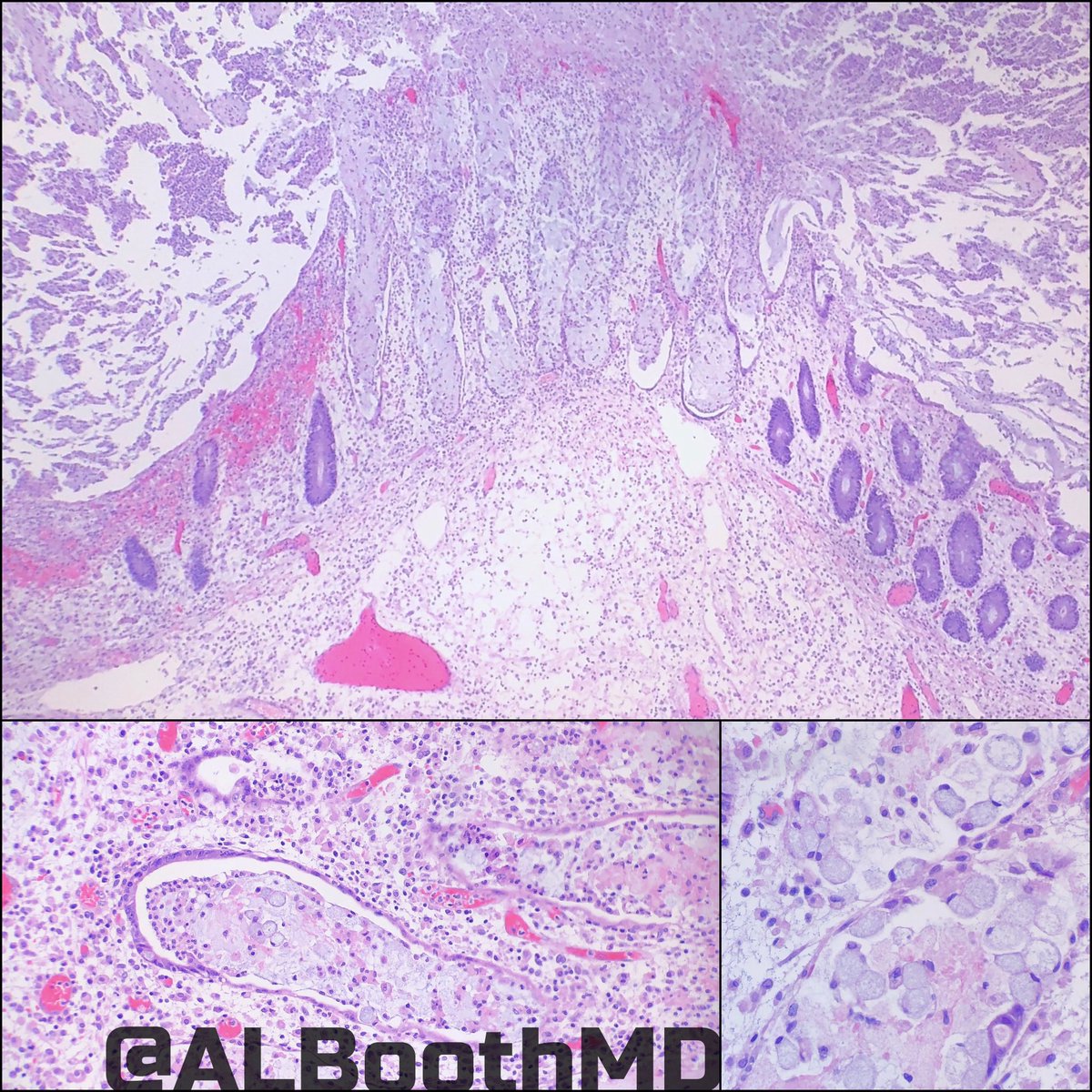 On the contrary, they increase swelling.
On the contrary, they increase swelling.
It’s very easy to understand the essence of the pastosity effect without Google. It looks like a person has been abusing alcohol for a long time. In particular, this is one of the reasons, but far from the only one.
Do not think that severe swelling is typical only for the elderly or mature people. Today, more and more young people are turning to a beautician with this problem.
Pastosity of the face: the main causes
The reason for the appearance of edema, swelling and withering of tissues is the incorrect redistribution of fluids in organs and tissues. Also, this problem is associated with impaired blood flow, lymph flow and circulation of interstitial fluid.
And now why are all these important processes in the body disturbed? Many factors can provoke these changes, including:
- diseases of internal organs;
- endocrine diseases;
- worm infestation;
- arterial hypertension, taking antidepressants;
- pregnancy;
- inferior cosmetics;
- ill-conceived diet: low in protein, vitamins and trace elements;
- excessive consumption of salt and spices in the morning;
- smoking
- sleep and eating disorders;
- chronic inflammatory processes in the face.

As you can see, none of these factors can be classified as cosmetic. Therefore, the problem of facial pastosity is not solved by a beautician, but by other specialists. Cosmetic procedures are part of the treatment.
Facial swelling can also be caused by allergies. In this case, the person should return to normal 1-2 days after contact with the allergen.
How to deal with pastosity?
There is no way you can fight this disease on your own. You can only lead a normal life, play sports. Also, it is useful to periodically take courses of procedures that improve microcirculation: massage, microcurrents, lymphatic drainage, etc.
If we talk about a specific plan of action, then you need:
- Make an appointment with your family doctor: according to the law, it is he who must refer you to a number of examinations to other specialists: an endocrinologist, gynecologist, orthodontist, etc. Theoretically, a cosmetologist can also do this based on your medical history, but only if he has a medical education.

- Strictly follow all the doctor’s advice: a narrow-profile specialist should draw up a detailed treatment program for you: starting with drugs and ending with procedures. It will probably take more than 1 month to get rid of the problem. Therefore, be prepared for a long treatment.
- Go to a beautician: only with a doctor’s opinion, having a treatment program, you can go to a beautician. Now he can pick the right procedures for you. Again, the person must have a medical background. Otherwise, he simply will not know what procedures are contraindicated when taking certain drugs.
- Don’t add anything of your own: don’t take drugs more often, don’t try new procedures: just follow the doctor’s recommendations exactly. Pastosity of the face is associated with serious violations of the body, and self-medication can harm you.
What if you are pregnant
The whole previous algorithm works here, but there are some nuances. For example, not all drugs can be taken in position. And, of course, not all procedures can be done.
And, of course, not all procedures can be done.
Therefore, you will have to start with nutrition. Together with a specialist, you need to create the right diet that will provide you with all the necessary trace elements. And at the same time, so that it is free of extra salts, spices, etc. It is better to stay away from such products.
Also, during pregnancy, blood circulation may be disturbed due to varicose veins. This is a typical disease that many women in position have.
When it comes to beauty products, high-quality professional cosmetics are the best. For example, hyaluronic gel for moisturizing the face or serum with snail mucin.
It is better to choose cosmetics together with a beautician .
Which cosmetic products to choose for looseness?
- Gels: they gently moisturize and nourish the skin, and also allow you to have a self-massage or a phonophoresis session. Improving blood circulation is never superfluous.


 Swelling occurs in the macula, which is the part of the eye that enables detailed, central vision. The person may notice changes to their central vision and how they see colors.
Swelling occurs in the macula, which is the part of the eye that enables detailed, central vision. The person may notice changes to their central vision and how they see colors.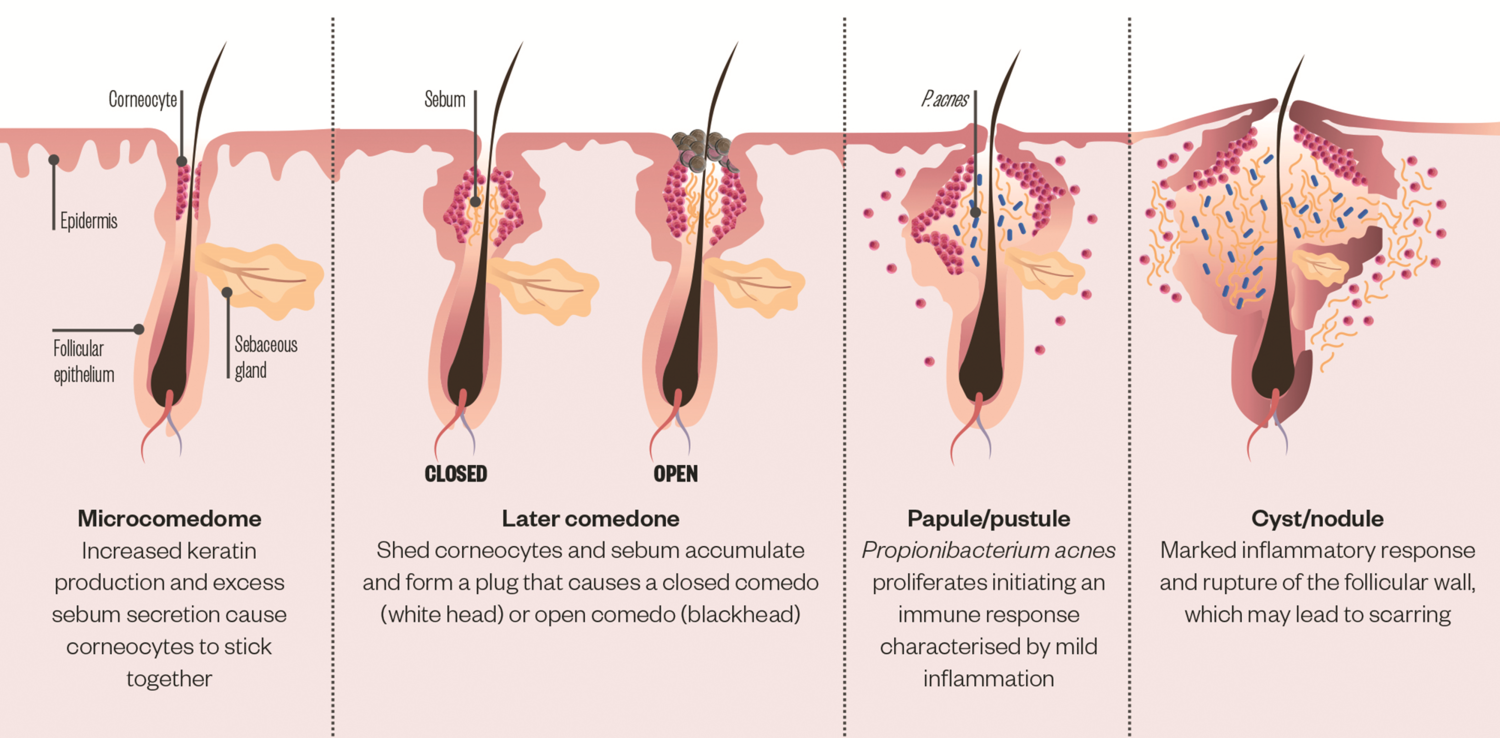
 As pressure builds up, fluids can leak into surrounding tissue.
As pressure builds up, fluids can leak into surrounding tissue. This is usually most noticeable in the skin.
This is usually most noticeable in the skin. Symptoms include:
Symptoms include:
 Acute mountain sickness can lead to high-altitude pulmonary edema or high-altitude cerebral edema.
Acute mountain sickness can lead to high-altitude pulmonary edema or high-altitude cerebral edema.


